Which is the best racing game on Wii U?
One of the biggest reasons why I love my Wii U is because many of its games prominently feature on-the-couch multiplayer. This is especially true among racing games because those titles thrive on having an active community of players, both local and online. Those looking for a fun racing experience on the Wii U currently have several choices, though two in particular stand out among the rest. The first is Mario Kart 8, Nintendo’s latest entry in the immensely popular kart racing franchise that released in 2014 to near universal acclaim. The second is Sonic and All-Stars Racing Transformed, a Wii U launch title that features many of Sega’s classic characters in what some would call the spiritual successor to the Nintendo 64 classic Diddy Kong Racing developed by Rareware. Suppose you had to choose between the two games. Which provides the most optimal kart racing experience on the Wii U? Or are the two games good enough to warrant purchases of both?
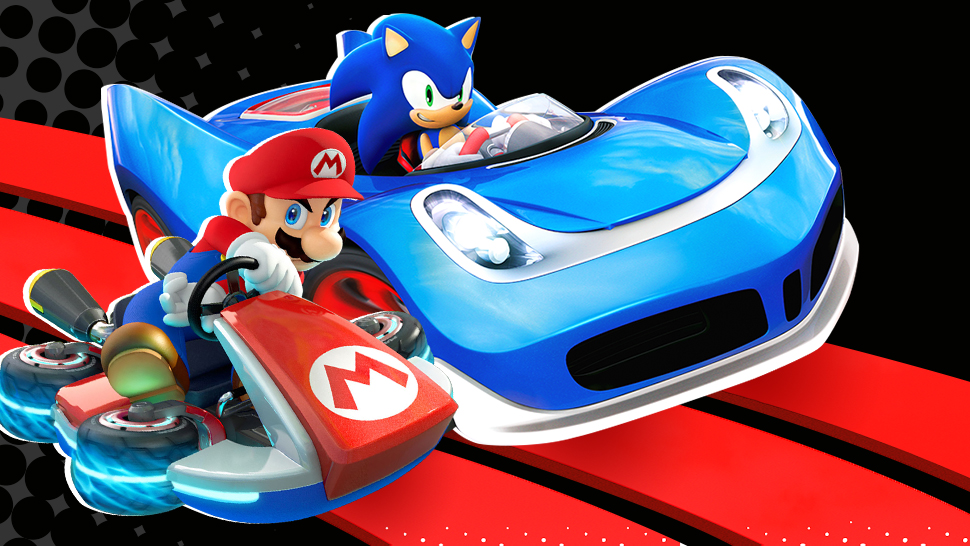
The past few Mario Kart games have had their ups and downs. After 2005’s surprisingly robust Mario Kart DS, the two entries that followed—Mario Kart Wii and Mario Kart 7—even though great games in their own rights, had a number of issues that prevented them from reaching the heights of their predecessors. It has been less than three years since we last saw a new Mario Kart game, and many have wondered whether it was time for the twenty-two year old franchise to finally take a break. It was up to Nintendo then to create a Mario Kart experience unlike any other, and to continue to push the Mario Kart franchise to its limits with the release of Mario Kart 8.
Sonic’s history with racing games has been less than stellar. The first was Sonic Drift on the Game Gear, and alongside the notorious Sonic R on Sega Saturn were some of the earliest mascot racers to hit the market, though both were critically panned. Sega moved onto the Sonic Riders series, which features hoverboards instead of road vehicles, from which three games were born, all of which received mixed to negative reviews. It was not until the franchise was handed over to Sumo Digital that Sonic racing games became a hit, and after the success of Sonic and Sega All-Stars Racing in 2010, its sequel, Sonic and All-Stars Racing Transformed, was released in 2012.
Both Mario Kart 8 and Sonic Racing Transformed have their own set of gimmicks. Mario Kart 8’s unique feature is anti-gravity—players can now race up walls and upside down if they so choose. While this new mechanic may not significantly alter the racing experience (though bumping into other racers while in anti-gravity nets you a temporary speed boost), it does allow for the designers at Nintendo to create some very creative racetracks (more on that later). Otherwise, gameplay in Mario Kart 8 remains largely the same as its predecessors; gliders and underwater sections return from Mario Kart 7, and the controls are as tight as always.
Sonic Racing Transformed takes a somewhat different approach. As the name suggests, the game features all sorts of “transformations,” both in terms of the stages and the racers themselves. Throughout the each race, players will find themselves transforming between a kart, a boat, and a plane. The tracks themselves may change after each lap as well, adding plenty of variety to the game’s already palatable course selection. These transformations can be quite jarring at first, especially since each vehicle controls completely differently. Nevertheless, it starts to feel natural after some practice, to the point where these transformations become quite exhilarating in and of themselves.
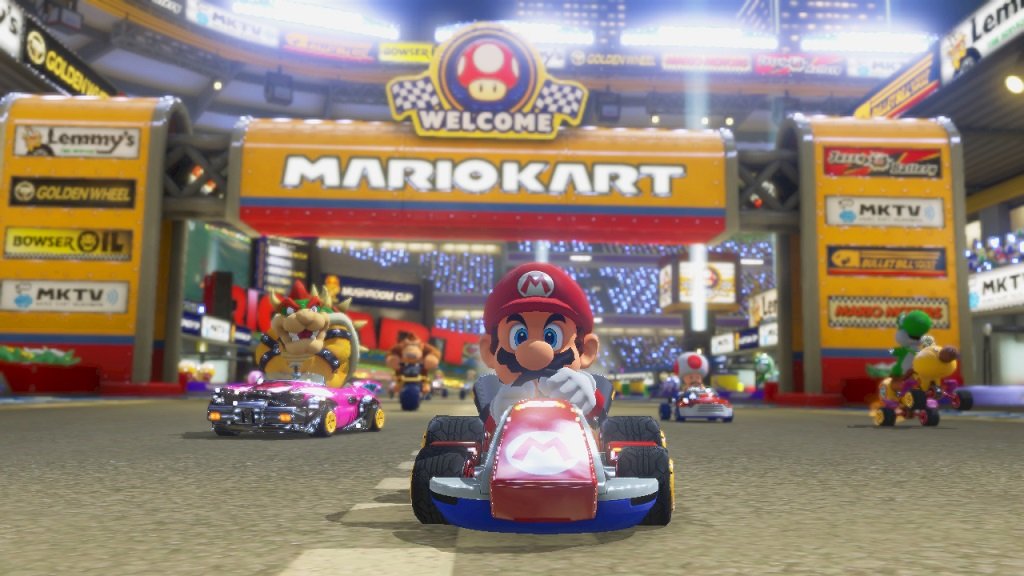
Differences aside, Mario Kart 8 and Sonic Racing Transformed share a set of very similar features, so skills from one game can easily be carried over to the other. Aspects like power sliding, tricking (off of ramps), and boosting add some sort of learning curve to both titles. You can also use motion controls if you so choose, though I would not recommend it for either (especially for Sonic, which is often hard enough to control with a stick). Both games also feature items, which can be used to either benefit the user or attack other players. I will not go into detail about them here, but some notable additions to both games make the item selection more varied and balanced than ever before.
Of course, no racing game is complete without racetracks, and both Mario Kart 8 and Sonic Racing Transformed feature some of the most impressive track designs I have seen in any racing game. Mario Kart 8 is graphically impressive; there are so many small details among the game’s sixteen new courses and sixteen remade ones (some of which even feature new anti-gravity portions!), all of which shine with a sheen of high definition. The track design has never been stronger; with the exception of maybe one course, there are practically none that I dislike—which is amazing considering how many there actually are. As I mentioned before, the anti-gravity mechanic likely has something to do with it; Mario Circuit, for example, is a Mobius strip reimagined as a racetrack—quite creative, if you ask me.
Sonic Racing Transformed also looks great, but instead of focusing on the details, the game looks at the big picture. Huge set-pieces—including parts of the track—are constantly moving and shifting around, and some tracks even go out of their way to tell a story (e.g. the Burning Depths track takes place during a rescue mission in which players must escape the facility). The scope of these tracks is also much larger than that of Mario Kart, and it really is impressive how much stuff they managed to shove into each one. Of course, all of this comes at a cost; when the game first launched, technical issues made the game almost unplayable, and even after various updates and patches the game frequently sees frame rate dips and strange physics bugs here and there. However, where Sonic shines are its homages to its franchises; every track is modeled from a particular Sega franchises, and a lot of effort was put into making these environments as authentic as possible. As a result, each of the game’s twenty tracks is very different from the others.
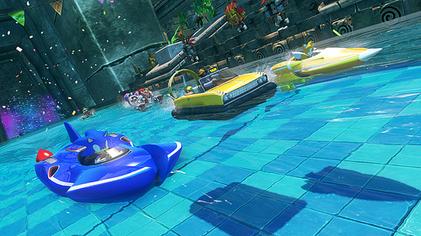
Aside from racing, both games have a plethora of other things to do. Sonic probably has the most extra content of the two; the game features single-player missions mode that can you can sink hours into, though some of the missions are severely poor in design and others are very unfair. That said, it is nice that the developers threw in something extra in their for those who do not always have friends over to play, especially since very few people play the game online. There are also a few unique arena modes that feature asymmetric multiplayer using the Wii U GamePad; one mode, for example, has one player on the GamePad control a giant Monkey Ball while others attempt to get out of its way. Speaking of GamePad support, the game also allows for five-player simultaneous multiplayer thanks to the Wii U’s extra screen. Though the game takes a tremendous frame rate hit as a result, it is a very useful feature when you have a ton of friends over.
Mario Kart 8 is relatively light on extra content, though there are still plenty of things to do outside of racing. The biggest disappointment here is Battle Mode—a series staple since the original SNES game—which takes place on modified racetracks now instead of custom battle arenas. As a result, this mode feels completely broken; Battle Mode thrives on chaos, but because these tracks are now so large, it is near impossible to find other players on the map. That aside, Mario Kart 8 features a robust online mode and the ability to make custom tournaments and rooms. A new replay mode called Mario Kart TV allows players to save and share highlight reels from their races. In terms of GamePad support, Mario Kart 8 does nothing special; just a map and an obnoxiously large horn.
I know this is probably a lot to take in, so here are a few bullet points to help make your decision easier:
Mario Kart 8
- 16 new tracks, 16 remade tracks from older games.
- Visually stimulating, lots of attention to detail.
- Features anti-gravity, which allows for impressive track designs.
- Light on extra content; Battle Mode is broken, but online modes are robust.
- Future paid DLC support.
- More balanced than any other Mario Kart to date.
- Poor GamePad support (it’s a horn).
Sonic and All-Stars Racing Transformed
- 17 new tracks, 3 remade tracks from older games.
- Huge set pieces, but at the cost of technical stability.
- Features transforming tracks and vehicles.
- Tons of unique extra modes, but weak online community.
- Strong single-player missions.
- 4 difficulty modes, the latter of which is extra challenging.
- Interesting GamePad use; allows for 5-player simultaneous play.
So, which is better? In my honest opinion, Mario Kart 8 is the better game. It is more polished, runs better, and arguably plays better too. However, Sonic and All-Stars Racing Transformed is not that far behind; its plethora of new ideas make this kart racer feel refreshing, and although it does not run as well, it is still loads more fun than some of the other more recent Mario Kart titles. You really cannot go wrong with either game, and if you are as big a racing fan as I am, there is ample enough reason to grab both.
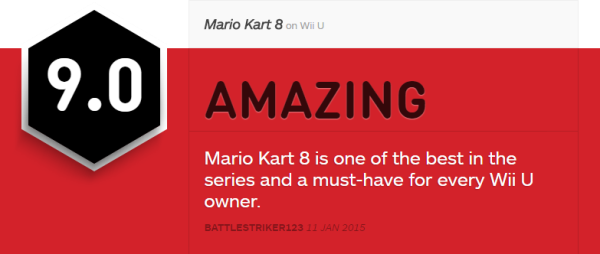
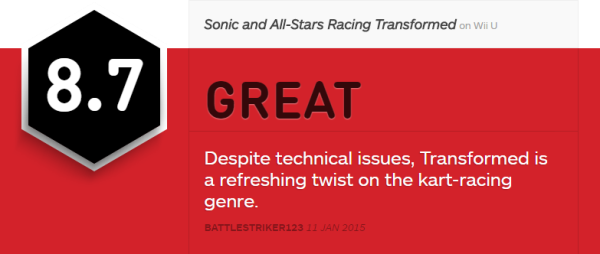
Author’s Note: Mario Kart 8 features downloadable extra content not reviewed in this blog post.
